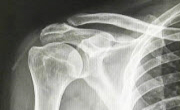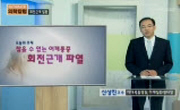Purpose: Breast augmentation with cohesive silicone gel implant has been popular but there remains the risk of implant rupture. We investigated the diagnosis and treatment of cohesive gel implant rupture. Methods: Ten cases of cohesive gel implant ...
http://chineseinput.net/에서 pinyin(병음)방식으로 중국어를 변환할 수 있습니다.
변환된 중국어를 복사하여 사용하시면 됩니다.
- 中文 을 입력하시려면 zhongwen을 입력하시고 space를누르시면됩니다.
- 北京 을 입력하시려면 beijing을 입력하시고 space를 누르시면 됩니다.
https://www.riss.kr/link?id=A60186005
- 저자
- 발행기관
- 학술지명
- 권호사항
-
발행연도
2011
-
작성언어
Korean
-
주제어
Rupture ; Cohesive silicone gel ; Breast implant ; 파열 ; 코히시브 실리콘 겔 ; 유방보형물
-
등재정보
KCI등재,SCOPUS,SCIE
-
자료형태
학술저널
- 발행기관 URL
-
수록면
96-102(7쪽)
-
KCI 피인용횟수
2
- 제공처
-
0
상세조회 -
0
다운로드
부가정보
다국어 초록 (Multilingual Abstract)
Purpose: Breast augmentation with cohesive silicone gel implant has been popular but there remains the risk of implant rupture. We investigated the diagnosis and treatment of cohesive gel implant rupture.
Methods: Ten cases of cohesive gel implant rupture between August 2006 and August 2010 in ooo were reviewed in this study. The diagnostic role of Magnetic resonance imaging (MRI) and ultrasonography (US), and operative findings of cases were studied retrospectively.
Results: The mean interval from previous surgery was 14.7 months ranging from 3 to 44 months. Nine cases were visited due to abrupt changes in texture of implants and 1 case for revision of capsular contracture. Seven of 10 cases had capsular contracture, simultaneously. We diagnosed the first case by US and MRI but only US was used in the other 9 cases. US showed discontinuity of the implant membrane and multiple parallel echogenic lines within the implant interior (stepladder sign), and MRI showed the presence of multiple curvilinear low-signal-intensity lines seen within the high-signal-intensity silicone gel (linguine sign). All the ruptured gel remained in place within the capsule and did not migrate into the surrounding area. Surgeries were implant replacement in 3, replacement with capsulectomy in 6 with capsular contracture, and subpectoral conversion with capsulectomy and mastopexy in 1 case.
Conclusion: US without MRI has asatisfactoryrole in the screening method for detection of cohesive silicone gel implant rupture in symptomatic cases. Ruptured implants were removed and replaced easily due to their highly cohesive nature.
참고문헌 (Reference)
1 Holmich LR, "Untreated silicone breast implant rupture" 114 : 204-214, 2004
2 Gorczyca DP, "The diagnosis of silicone breast implant rupture" 120 : 49S-61S, 2007
3 Heden P, "Style 410 cohesive silicone breast implants: safety and effectiveness at 5 to 9 years after implantation" 118 : 1281-1287, 2006
4 DeBruhl ND, "Silicone breast implants: US evaluation" 189 : 95-98, 1993
5 Sanchez-Guerrero J, "Silicone breast implants and rheumatic disease. Clinical, immunologic, and epidemiologic studies" 37 : 158-168, 1994
6 McCarthy CM, "Silicone breast implants and magnetic resonance imaging screening for rupture: do U.S. Food and Drug Administration recommendations reflect an evidence-based practice approach to patient care" 121 : 1127-1134, 2008
7 Lipworth L, "Silicone breast implants and connective tissue disease: an updated review of the epidemiologic evidence" 52 : 598-601, 2004
8 Ikeda DM, "Silicone breast implant rupture: pitfalls of magnetic resonance imaging and relative efficacies of magnetic resonance, mammography, and ultrasound" 104 : 2054-2062, 1999
9 Endo LP, "Silicone and rheumatic diseases" 17 : 112-118, 1987
10 Schnur PL, "Silicon analysis of breast and periprosthetic capsular tissue from patients with saline or silicone gel breast implants" 98 : 798-803, 1996
1 Holmich LR, "Untreated silicone breast implant rupture" 114 : 204-214, 2004
2 Gorczyca DP, "The diagnosis of silicone breast implant rupture" 120 : 49S-61S, 2007
3 Heden P, "Style 410 cohesive silicone breast implants: safety and effectiveness at 5 to 9 years after implantation" 118 : 1281-1287, 2006
4 DeBruhl ND, "Silicone breast implants: US evaluation" 189 : 95-98, 1993
5 Sanchez-Guerrero J, "Silicone breast implants and rheumatic disease. Clinical, immunologic, and epidemiologic studies" 37 : 158-168, 1994
6 McCarthy CM, "Silicone breast implants and magnetic resonance imaging screening for rupture: do U.S. Food and Drug Administration recommendations reflect an evidence-based practice approach to patient care" 121 : 1127-1134, 2008
7 Lipworth L, "Silicone breast implants and connective tissue disease: an updated review of the epidemiologic evidence" 52 : 598-601, 2004
8 Ikeda DM, "Silicone breast implant rupture: pitfalls of magnetic resonance imaging and relative efficacies of magnetic resonance, mammography, and ultrasound" 104 : 2054-2062, 1999
9 Endo LP, "Silicone and rheumatic diseases" 17 : 112-118, 1987
10 Schnur PL, "Silicon analysis of breast and periprosthetic capsular tissue from patients with saline or silicone gel breast implants" 98 : 798-803, 1996
11 Cunningham B, "Safety and effectiveness of Mentor's MemoryGel implants at 6 years" 33 : 440-444, 2009
12 van Nunen SA, "Post-mammoplasty connective tissue disease" 25 : 694-697, 1982
13 Janowsky EC, "Meta-analyses of the relation between silicone breast implants and the risk of connective-tissue diseases" 342 : 781-790, 2000
14 Tebbetts J, "McGhan's biodimensional augmentation system cohesive gel mammary implants. Instructional video 55'"
15 Lalonde L, "Magnetic resonance imaging of the breast: current indications" 56 : 301-308, 2005
16 Cher DJ, "MRI for detecting silicone breast implant rupture: meta-analysis and implications" 47 : 367-380, 2001
17 O'Toole M, "Imaging spectrum of breast implant complications: mammography, ultrasound, and magnetic resonance imaging" 21 : 351-361, 2000
18 Miyoshi K, "Hypergammaglobulinemia by prolonged adjuvanticity in men: disorders developed after augmentation mammoplasty" 9 : 21-24, 1964
19 Duffy MJ, "Health risks of failed silicone gel breast implants: a 30-year clinical experience" 94 : 295-299, 1994
20 Kreymerman P, "Guidelines for using breast magnetic resonance imaging to evaluate implant integrity" 62 : 355-357, 2009
21 Lee SD, "Complications and reasons for dissatisfaction in augmentation mammoplasty- analysis of 42 cases of re-operation" 7 : 121-125, 2004
22 Di Benedetto G, "Comparative study of breast implant rupture using mammography, sonography, and magnetic resonance imaging: correlation with surgical findings" 14 : 532-537, 2008
23 Brown MH, "Cohesive silicone gel breast implants in aesthetic and reconstructive breast surgery" 116 : 768-779, 2005
24 Uchida J, "Clinical application of crosslinked dimethylpolysiloxane, restoration of breast, cheeks, atrophy of infantile paralysis, funnel-shape chest, etc" 4 : 1961
25 Bryant H, "Breast implants and breast cancer--reanalysis of a linkage study" 332 : 1535-1539, 1995
26 Berkel H, "Breast augmentation: a risk factor for breast cancer" 326 : 1649-1653, 1992
27 Heden P, "Breast augmentation with anatomical cohesive gel implants: the world's largest current experience" 28 : 531-552, 2001
28 Deapen DM, "Breast augmentation and the risk of subsequent breast cancer" 328 : 662-663, 1993
29 National Toxicology Program, "Bioassay of 2,4-diaminotoluene for possible carcinogenicity" 162 : 1-139, 1979
30 Cronin TD, "Augmentation mammaplasty: a new "natural feel" prosthesis" 41-49, 1963
동일학술지(권/호) 다른 논문
-
- 대한외과학회
- 김기훈(Ki Hoon Kim)
- 2011
- KCI등재,SCOPUS,SCIE
-
- 대한외과학회
- Sang Dong Kim
- 2011
- KCI등재,SCOPUS,SCIE
-
복부 결합조직형성 소원형세포종양(Desmoplastic Small Round Cell Tumor, DSRCT)의 임상병리학적 특성 및 임상결과
- 대한외과학회
- 김소현(So Hyun Kim)
- 2011
- KCI등재,SCOPUS,SCIE
-
The Learning Curve for Single-Port Laparoscopic Cholecystectomy by Experienced Laparoscopic Surgeon
- 대한외과학회
- Soon Hwa Youn
- 2011
- KCI등재,SCOPUS,SCIE
분석정보
인용정보 인용지수 설명보기
학술지 이력
| 연월일 | 이력구분 | 이력상세 | 등재구분 |
|---|---|---|---|
| 2023 | 평가예정 | 해외DB학술지평가 신청대상 (해외등재 학술지 평가) | |
| 2020-11-12 | 학술지명변경 | 한글명 : 대한외과학회지 -> Annals of Surgical Treatment and Research |  |
| 2020-01-01 | 평가 | 등재학술지 유지 (해외등재 학술지 평가) |  |
| 2013-12-30 | 학술지명변경 | 외국어명 : Journal of The Korean Surgical Society -> Annals of Surgical Treatment and Research |  |
| 2011-01-01 | 평가 | 등재학술지 유지 (등재유지) |  |
| 2009-01-01 | 평가 | 등재학술지 유지 (등재유지) |  |
| 2006-01-01 | 평가 | 등재학술지 선정 (등재후보2차) |  |
| 2005-01-01 | 평가 | 등재후보 1차 PASS (등재후보1차) |  |
| 2004-01-01 | 평가 | 등재후보학술지 유지 (등재후보1차) |  |
| 2002-07-01 | 평가 | 등재후보학술지 선정 (신규평가) |  |
학술지 인용정보
| 기준연도 | WOS-KCI 통합IF(2년) | KCIF(2년) | KCIF(3년) |
|---|---|---|---|
| 2016 | 1.39 | 0.21 | 0.97 |
| KCIF(4년) | KCIF(5년) | 중심성지수(3년) | 즉시성지수 |
| 0.73 | 0.56 | 0.328 | 0.06 |






 DBpia
DBpia



